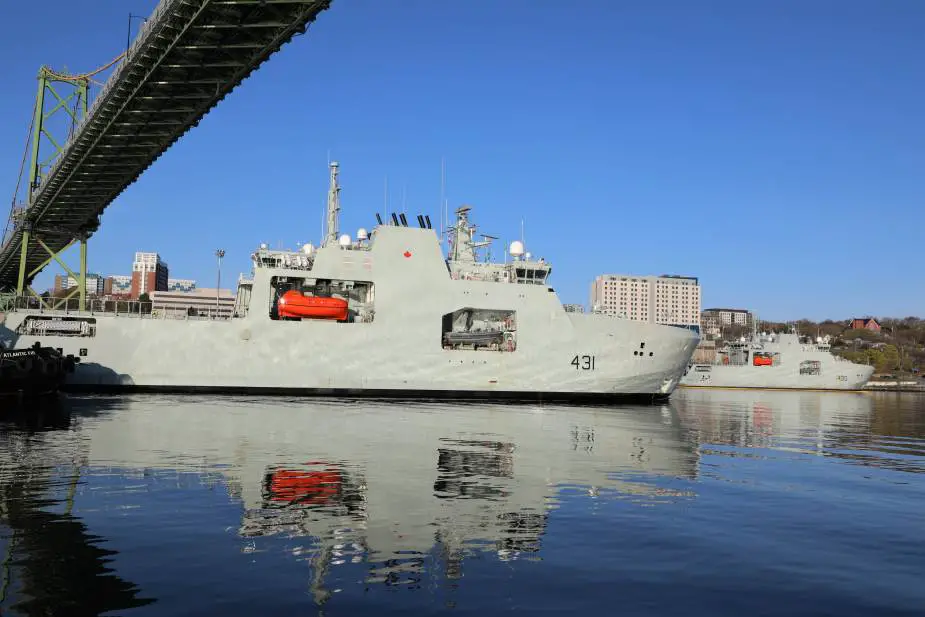Breaking news
HMCS Margaret Brooke Harry DeWolf-class OPV for Canadian navy successfully completes sea trials.
According to information published by Irvin Shipbuilding on May 12, 2021, the second Harry DeWolf-class offshore patrol vessel HMCS Margaret Brooke (AOPV 431) built for the Royal Canadian Navy has successfully completed sea trials.
Follow Navy Recognition on Google News at this link
 The second Harry DeWolf-class offshore patrol vessel HMCS Margaret Brooke AOPV 431 for the Canadian Navy. (Picture source Irvin Shipbuilding)
The second Harry DeWolf-class offshore patrol vessel HMCS Margaret Brooke AOPV 431 for the Canadian Navy. (Picture source Irvin Shipbuilding)
In January 2015, The Government of Canada announced a $2.6 billion contract to Irving Shipbuilding Inc. to build five Harry DeWolf-class patrol ships, marking the start of the construction phase under the National Shipbuilding Strategy. In December 2018, A contract amendment was signed for the acquisition of a sixth ship and extension of the schedule.
The Arctic and Offshore Patrol Ship project acquisition budget is $4.3 billion. This includes ship design, project management, materials and labor needed to build all the ships, jetty and fueling infrastructure, initial spare parts, technical data, training of crew, contingency, amongst other items.
The construction of the first vessel, the HMCS Harry DeWolf, began in September 2015 and was launched to water in September 2018. Following the completion of final sea trials in mid-July, the first Arctic and Offshore Patrol Ship, the future HMCS Harry DeWolf, was delivered to the Government of Canada on July 31, 2020.
The Harry DeWolf-class patrol vessel will operate in the Arctic between July and October, providing a greater, and longer, CAF presence in the north. It will be capable of operating in first-year ice of 120-centimeter thickness. This will allow the Royal Canadian Navy to have unescorted access to areas of the Arctic that were previously inaccessible.
In November 2019, The second Arctic and Offshore Patrol ship, the future HMCS Margaret Brooke, was successfully launched in Halifax. Builder trials for the first Arctic and Offshore Patrol Ship, the future HMCS Harry DeWolf were held in late November.
The HMCS Margaret Brooke has an overall length of 103.6 m with a beam of 19.0 m and a displacement of 6,615 metric tons. The ship has an enclosed foredeck that protects machinery and workspaces from Arctic climates. The vessel is powered by a diesel-electric system composed of four 4,800 hp. generators and two diesel engines rated developing 6,000 hp driving two shafts. The ship is able to reach a maximum speed of 17 knots (31 km/h) and 3 knots (5.6 km/h) as icebreaking. She has a maximum cruising range of 6,800 nautical miles (12,600 km). The ship has a crew of 65 people.
The HMCS Margaret Brooke is able to deploy containers, underwater survey equipment, or landing craft. Payload operations are aided by a 20-metric-ton crane for loading and unloading. The ship is equipped with a vehicle bay that can hold can pickup trucks, all-terrain vehicles, and snowmobiles. The ship also has two 8.5-meter multi-role rescue boats capable of over 35 knots (65 km/h).
The HMCS Margaret Brooke is armed with one BAE Mk 38 25 mm gun and two M2 Browning machine guns. The patrol ship has an onboard hangar and flight deck for helicopters up to the size of a Sikorsky CH-148 Cyclone.




























